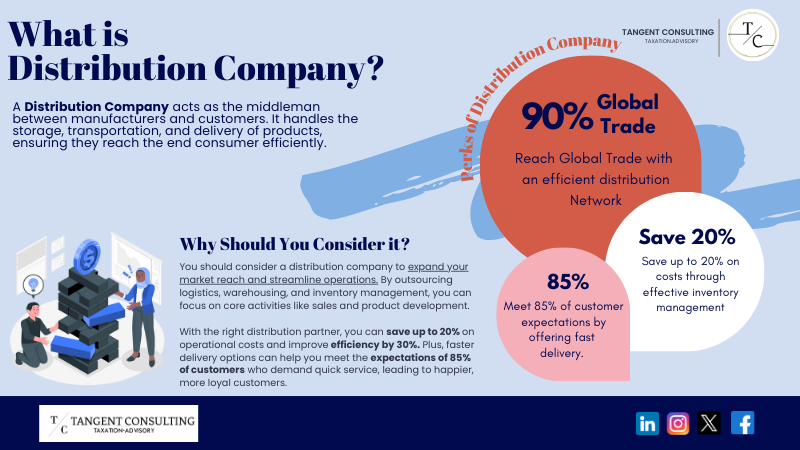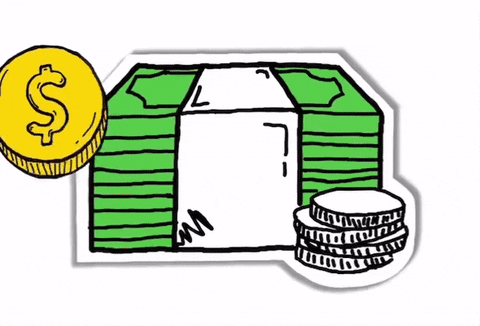5 Financial Tips for Small Distribution Companies
5 Financial Tips for Small Distribution Companies

In 2020, OTW Shipping, a small distribution company co-founded by two college students, Nick and Parker, started e-commerce logistics. In the first year, they shipped 120K packages; in the second year, they hit $1 million in revenue.
However, like many small distribution companies, they faced many challenges in their new venture.
If you are facing similar problems with your distribution company, this guide is for you. Here, we’ll mention the top 5 financial tips your small distribution company can use to stay ahead.

Problems Faced by Small Distribution Companies
Before diving into financial tips, it’s important to address key problems small distribution companies face.
Poor Inventory Management
In the IRE Journal, Effect of Inventory Management System on Operational Performance in Manufacturing Firms, researchers found that poor inventory management is one of the causes of business failure. If you have too much stock in the inventory, you have locked up your cash. On the other hand, if your inventory is low, you can’t keep up with the demand. This can cause cash flow problems. You need to find a balance between the two.
Higher Shipping Costs
Shipping is the most important aspect of distribution businesses. However, you can’t achieve sustainable growth when the shipping costs are high. In the 2023 State of Shipping report, 36% of e-commerce businesses consider shipping costs their biggest challenge.
It’s a common factor that businesses tend to pass on these costs to consumers when shipping costs increase. In a distribution business, where a small price change can make a big difference, the rising costs can hurt the business.

Seasonal Demands
We are writing this in October, and the seasonal demand is increasing. Researchers in the Small Business Institute Journal found that seasonal fluctuations can lead to slow or lost sales.
When demands are high, small distribution companies can’t keep up with the pace. This can lead to cash flow problems, and many businesses can’t sustain their bottom line.
Cash Flow Problems
Speaking of cash flow, it is the biggest reason why many small businesses suffer. According to a QuickBooks survey, 61% of small businesses suffer cash flow problems. It makes sense that there are many costs to keep track of. You have warehouse costs, transportation fees, payrolls, and payment delays, all contributing to the cash crunch.
We took a deep dive into cash flow problems; you can check them out here.

5 Financial Tips for Small Distribution Companies
Now that we have addressed some major problems, let’s discuss five financial tips your small distribution business needs.
1. Improve Cash Flow
We mentioned above how cash flow problems are the biggest reason many businesses suffer. So, a small distribution company can apply tighter cash flow controls. To do this, you can create cash flow forecasting, which helps to anticipate when you’ll receive the money and use it for expenses.
You can also offer clients early payment discounts to increase receivables or use invoice discounts. This mumbo-jumbo can seem like too much for any small business owner. The good thing is you can outsource to us (we have to mention our name, you know 😉).
Outsourcing can save you 20 days on payment collection. That’s an extra 20 days of cash flow to pay employees, take on new projects, or reinvest in your business. So, it’s not all about getting payments faster.

2. Automate Inventory
If you are still living in the 1980s and tracking inventory the old-fashioned way, you can have all the nostalgia, but you are wasting time and money. You need to automate inventory management to boost your bottom line.
You can use inventory management software like QuickBooks to track inventory and reduce costs. Automation reduces the risk of human errors and can provide insights into sales trends.
You would be happy to know that Tangent Consulting partnered with QuickBooks to offer 80% off the first six months of an annual subscription. This offer also includes a 30-day free trial. So, grab a deal now before it’s too late.
3. Increase Revenue
As we mentioned in the beginning, OTW was a distribution company. They increased their revenue by tapping into e-commerce logistics. As a small business owner, diversifying revenue streams can also increase revenue. This also leaves you less vulnerable to market fluctuations, industry downturns, and client behavioral changes.
You can offer services like B2B logistics, retail distribution, and others to diversify.

4. Reduce Shiping Costs
Shipping costs are a big burden for small distribution companies. However, you can smartly cut shipping costs. You can use route optimization tools to reduce fuel costs, improve delivery time, and reduce extra staff.
If you don’t know anything about route optimization tools, they plan the fastest and most cost-effective routes. You can check some of the best tools here.
5. Build a Cash Reserve
As we mentioned above, small distribution companies can’t keep up with the seasonal demand. You can build a cash reserve to counter this when business is going well. It can keep the cash flow positive, and if the demand increases, you can wisely buy more inventory.
You can also use cash flow forecasting to predict seasonal shifts earlier and ensure you have enough capital.
It’s important to note that this rainy-day fund should have enough cash to cover three to six months of operating expenses.
Final Thoughts
For small distribution companies, it’s not just about day-to-day operations. You need to plan ahead, prepare for the unexpected, and sustain long-term growth. The strategies we mentioned can help you avoid the pitfalls that many businesses fall prey to.
If you can’t identify the real cause of your business failure, no problem! You can contact us, and we can dive deeper into the root cause. So you can have more sleep at night 😊
FAQs
What are the 5 types of distribution?
The types of distribution include:
- Direct Distribution
- Indirect Distribution
- Intensive Distribution
- Selective Distribution
- Exclusive Distribution
Is Coca-Cola direct or indirect?
Coca-Cola offers direct and indirect distribution through third-party channels.
